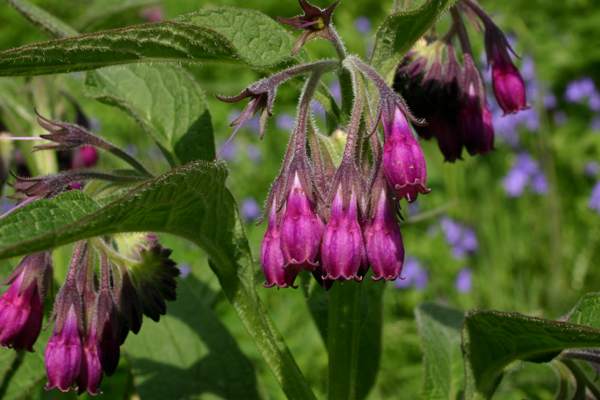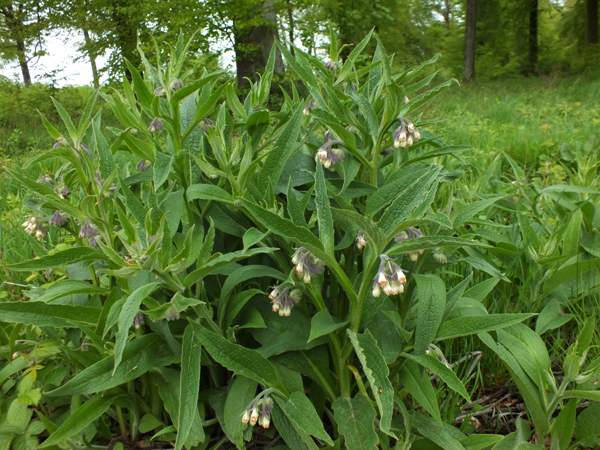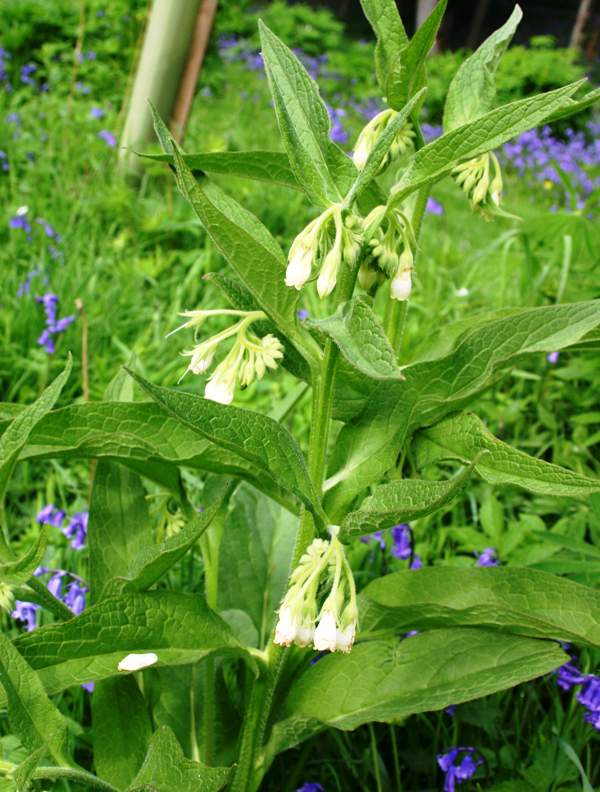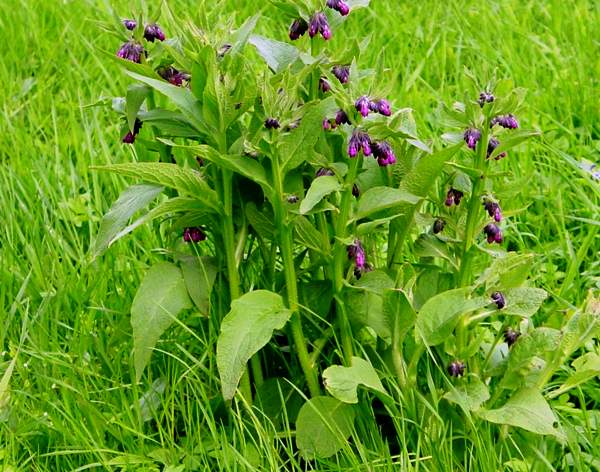Trees Birds Mammals Fish Amphibians Reptiles
Wild Algarve
Bookshop
Symphytum officinale - Common Comfrey
Phylum: Magnoliophyta - Class: Equisetopsida - Order: Lamiales - Family: Boraginaceae

Comfreys were first introduced to the UK as a fodder plant and have since become naturalised. Today they are used mainly as a type of green fertiliser.
Description
Comfrey is a perennial wildflower and can grow to a height of 80cm. The stem and ovate-lanceolate leaves are hairy, and the purple flowers are tubular.
Comfreys (of which there are several growing in the UK, Ireland and mainland Europe) are a confusing group of plants because they readily hybridise with each other, producing flowers varying from white, through pale pink and mauve to dark purple. The very dark purple ones found in Britain are commonly referred to as Russian Comfrey -Symphytum x uplandicum.

Habitat
These perennial plants favour riverbanks, shaded hedgerows and other damp places, but they can also be found in open grassland provided the soil is not prone to drying out.
Blooming times
The flowers of Comfrey appear in April, May and June, often making lovely displays with Bluebells and other early spring flowers.
Uses
At one time, Comfrey leaves were used as dressings for cuts, bruises and broken bones, although in the latter case it was the roots of the plant that were combined with other substances and used as a kind of 'Plaster of Paris'.

Similar species
There are many comfrey species, some of which have creamy-white flowers (see the example above); identifying them to species level is a task for experts!
Infusions of the plants were used in the treatment of gastric ulcers and other stomach complaints although today this concentrated form of comfrey is discouraged because of the levels of liver-damaging alkaloids to be found in these mixtures.
Comfrey leaves are still used for culinary purposes and the leaves eaten in salads although small quantities are recommended.

The pictures shown on this page were taken in France in late April and West Wales in early May.
Sue Parker's latest ebook is a revised and enlarged edition of Wild Orchids in The Burren. Full details here...
Buy it for just £5.95 on Amazon...
Sue Parker's new ebook is a comprehensive and fully revised edition of her acclaimed field guide to the Wild Orchids of Wales. Full details here...
Buy it for just £5.95 on Amazon...
Please Help Us: If you have found this information interesting and useful, please consider helping to keep First Nature online by making a small donation towards the web hosting and internet costs.
Any donations over and above the essential running costs will help support the conservation work of Plantlife, the Rivers Trust and charitable botanic gardens - as do author royalties and publisher proceeds from books by Pat and Sue.